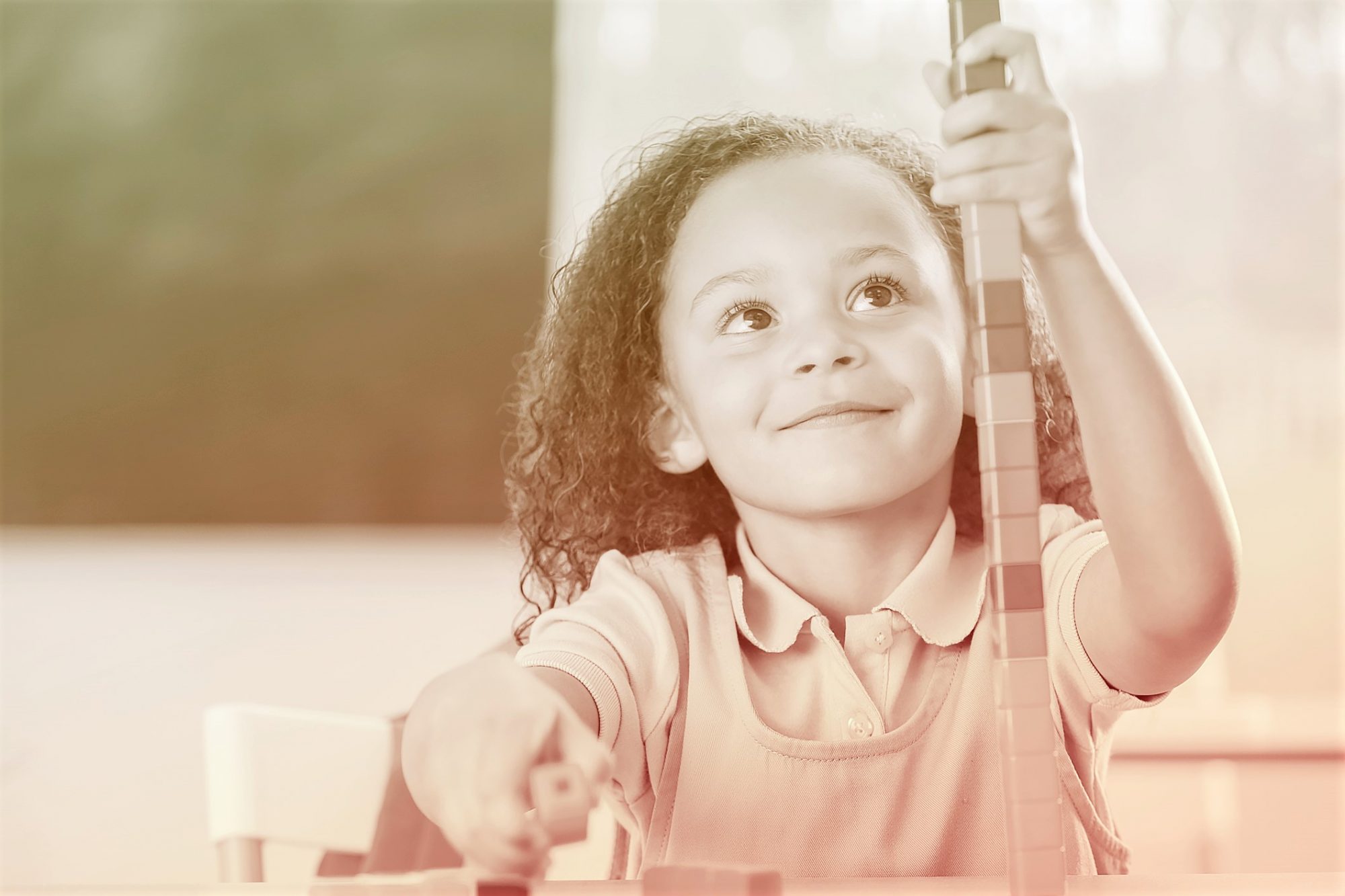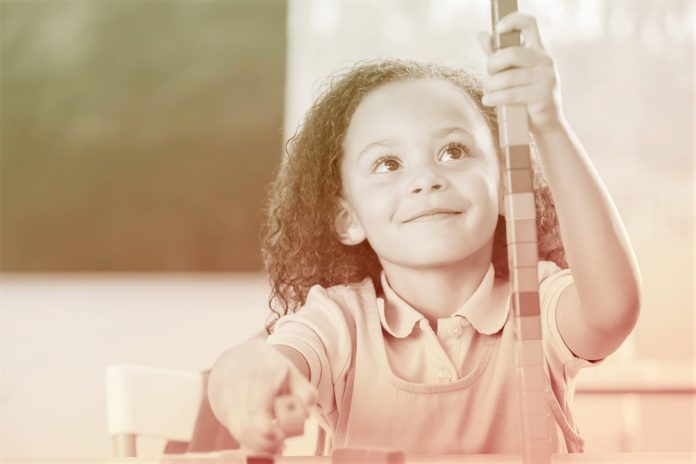
Children enhance their knowledge of basic math principles during kindergarten. By the end of the year, they should recognize, order, and count items up to 100. Other milestones include adding and subtracting single-digit numbers, recognizing shapes, creating patterns, and classifying objects by size.
While your little one’s teacher will make sure they're on track, you can also improve cognitive skills with at-home activities. The key is incorporating math into everyday life, making it seem like a game instead of a chore. (In other words: Lay off the worksheets and flashcards!) Keep reading for 10 fun math activities for kindergarten students.
1. Cup Stacking
Practice counting double-digit numbers with this unique cup-stacking game. Gather about 100 plastic cups and label them from 1 to 100. Have your child stack the cups in numerical order, counting out loud as they go. See how high the tower stacks before it tumbles—or if you use all 100 cups, your kindergartener can dramatically knock it over!
2. Number Bingo
During kindergarten, children will learn to recognize and write the numerical version of numbers—usually up to 20. To reinforce the concept, create a bingo board of four squares by five squares. Randomly label each square between 1 and 20. (Note: If your kid gets confused, you can also label the squares between 11 and 20, repeating each number twice. Teen numbers are usually the hardest for kindergarteners to grasp.) Now it’s time to let the Bingo games begin! You can download a variety of free “teen bingo” templates at The Measured Mom.
3. Shape Scavenger Hunt
Your kindergartener might recognize basic shapes, but seeing them in real life reinforces the concept of geometry. Go on a scavenger hunt in your backyard, home, or local park. Help your child find objects in a variety of different shapes—circles, squares, triangles, rectangles, and more. What are the distinguishing features between each shape? How do three-dimensional shapes differ from two-dimensional ones?
4. Jumping Bean
Label pieces of construction paper from 1 to 20, and lay them in a maze on the ground. Your kindergartener can jump between the papers in numerical order, trying not to touch the ground as they go. (Make sure the papers are spaced so your child can jump between them safely). If your student completes the course, encourage them to do it backwards! You can also call out a random number and have them jump on the corresponding paper.
5. Gauging Weight
Does your little one love watching you in the kitchen? Whenever you gather ingredients, ask them to make a hypothesis about weight. “Which one is heavier—the onion or the can of soup?” You can bring out a food scale for tricker items, which also gives them practice reading and interpreting measurements.
6. Numerical Collage
Whip out your stash of newspapers and magazines. Look through them with your child, having them search for the numbers one through 30. When you find a number, your child can cut it out with child-safe scissors (using them improves muscle strength and hand-eye coordination). Finish the project by gluing the numbers onto a pretty collage.
7. Playing Card Addition
Grab a deck of cards, pick out all numbers between 1 and 5, and shuffle them. Have your kindergartener pull out two at a time and add the numbers together, continuing until she works her way through the entire stack of cards. Counting blocks, such as SnapCubes, can make the process easier.
Want to raise the stakes? Start the timer! You can also throw cards numbered 6-10 into the mix (although your child might not be ready until first grade). Check out Planning Playtime for a variation of “Game Card Addition” that includes a recording worksheet.
8. Button Sorting
Not only do kindergarteners recognize different shapes, they should also sort objects based on color, size, and weight. Give your kid an assortment of buttons and encourage them to arrange them by color. Next, your student can order the buttons based on size or number of holes. This math activity for kindergarteners helps improve measurement and data skills.
9. Board Games
Board games involving dice and count moves also improve number recognition and simple arithmetic. To increase the complexity, double the number that appears for each move (for example, if your child rolls a 4, they'll actually move 8 spaces). Some classic options include CandyLand and Chutes and Ladders.
10. Finish the Pattern
Gather everyday objects—such as colorful socks, candies like M&Ms or Skittles, or drinking cups—and arrange them in a pattern on the floor. For example, you might lay out M&Ms in this pattern: blue, red, green, blue, red, green. Can your child guess what comes next?













